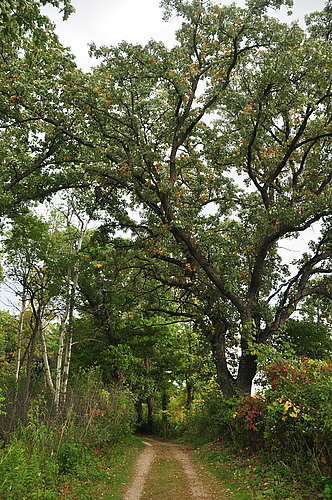
In recent visits to our beautiful, crisp, November Arboretum, I find myself doing quite a bit of reflection. As a senior whose next two terms are pulling me away from the Arboretum towards other work-related pursuits, this is the last time I will be writing Arb notes. This term is also that last that I’ll be working as a student naturalist. In this time of transition, when I visit the Arb I still notice the bare trees, the now songless prairie, and the occasional errant goose flocking south, then north, then south again. However, my thoughts quickly drift towards the past years, and the effect working with the Arb had had on me.
I knew little about land management when I got to Carleton. I simply felt awed that a small college could take 800 acres of land swept out of balance by tilling, grazing, dumping, damming, invasive species, overpopulation, etc., and make a plan to restore a balance not seen since before European settlement. I found the mechanics of this restoration invigorating. I learned the steps of a prairie restoration, from tilling to monoculture, to native seed collection and planting. I learned about invasive species threatening the Arb, and prioritizing resources available to restorations. I worked with and learned about prescribed fire, and how with the correct strategy, technique, and safety precautions it can become one of the most broadly effective management tools in use.
Beyond the procedural knowledge, however, I gained a better perspective on the complexity of land management and the decisions that go into such an active program. Every day questions arise about use, policy, and action.
Which tracts of non-native forest are most problematic? Would reintroduction of a certain species benefit the Arb? How can we prepare for an insect moving north that threatens our entire ash population? The Arb is an experiment in all of these questions, but also in the progress that can be made if managers have the resources to act on them.
Prairie now covers the lower and upper Arb in oceans of green turned to beige. Upland forests once usurped by the pine plantations of settlers are on the path to restoration. Oak savannah is being restored. Wetlands are being restored. The breadth of birds, mammals, amphibians, reptiles, and insects moving back into what is now suitable habitat is expanding every year. These are no small victories, and I can’t wait to see what new progress has been made in the next few years.
After years of working in the Arb I’d like to thank everyone who’s ever worked in it, studied it, supported it, and even casually strolled through it. Learning about the Arb has been and will continue to be a wonderful experience. I hope that as progress continues, it’s an experience that many more students and visitors will share.
-Brandon Valle ’14 for the Cole Student Naturalists
